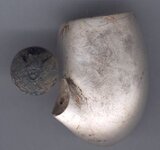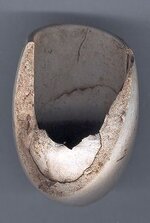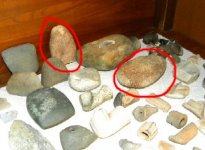vayank54
Silver Member
I went to where I dug my first US plate this year and dug an eagle I cuff and this broken clay pipe bowl. When I saw it I thought it was a bit bigger than most I had dug but then noticed it looks like it was made over an older broken pipe bowl. I've never seen this before and was wondering in anyone had any ideas. Was this a repair or just a defective bowl?






![pipes[1].jpg](/data/attachments/381/381494-5e6031fed9cf26ece1ce2eb0cbc68371.jpg)
 Some me and my dad have found!
Some me and my dad have found!![DSCN0598[1].JPG](/data/attachments/374/374341-4627c65b43e4034b5eb5fb797906e608.jpg)
![DSCN0600[1].JPG](/data/attachments/374/374357-8a403b4900ef5c0c993e97f1d09170e3.jpg)
![DSCN0601[1].JPG](/data/attachments/374/374369-f66c58675db21e5e7f644d5acb0e6a76.jpg)
![securedownload[1].jpg](/data/attachments/381/381845-c96651857a9960b6ef2e424613e5d079.jpg)
![securedownload[1].jpg](/data/attachments/381/381863-03ecc5ecfd0b31b9c96fff4c79746322.jpg)
![securedownload[1].jpg](/data/attachments/381/381910-4509920a33be4fb50cca8e4b086874f2.jpg)
![DSCN0598[1].JPG](/data/attachments/374/374351-4627c65b43e4034b5eb5fb797906e608.jpg)
![DSCN0600[1].JPG](/data/attachments/374/374365-8a403b4900ef5c0c993e97f1d09170e3.jpg)
![DSCN0601[1].JPG](/data/attachments/374/374383-f66c58675db21e5e7f644d5acb0e6a76.jpg)







